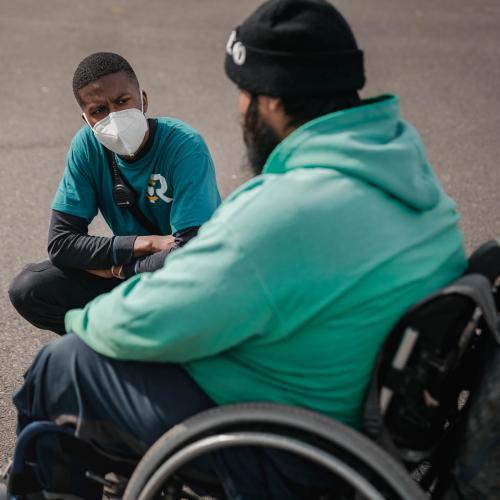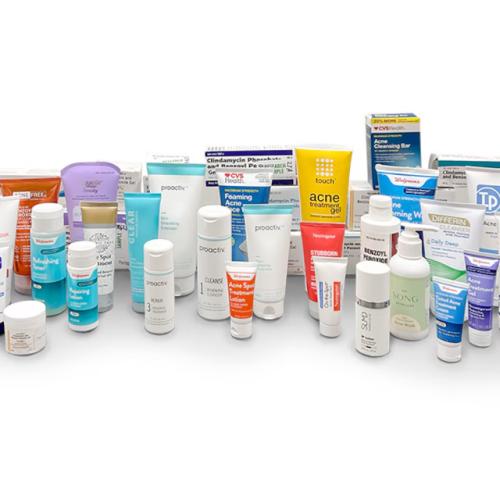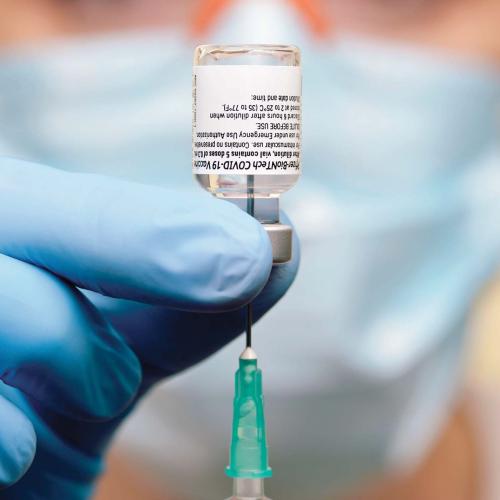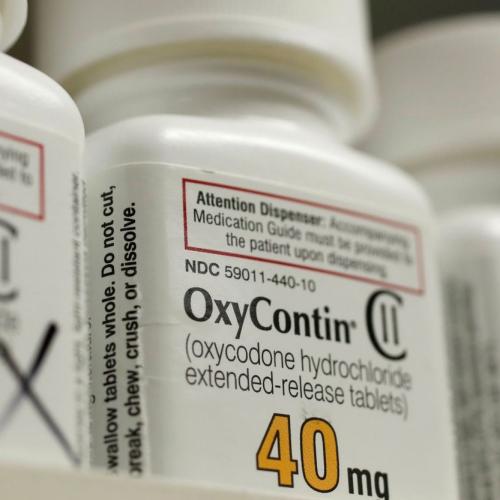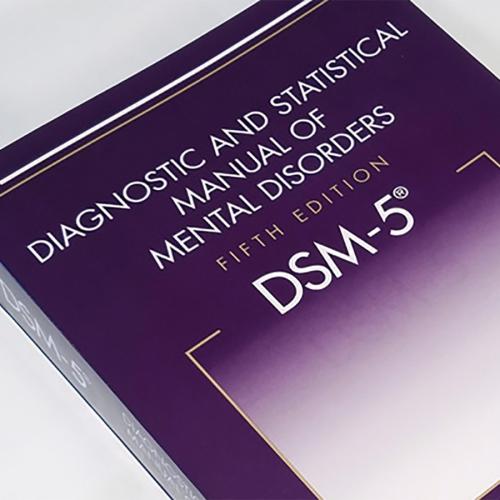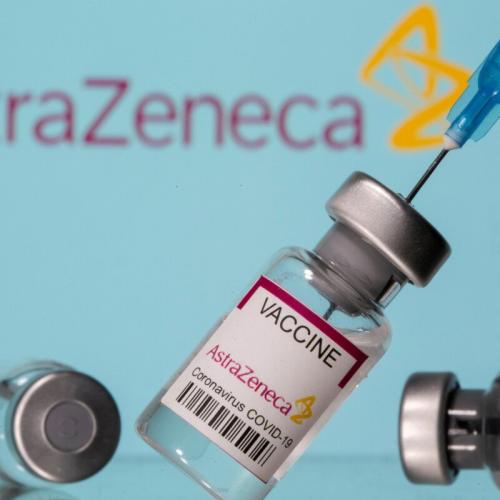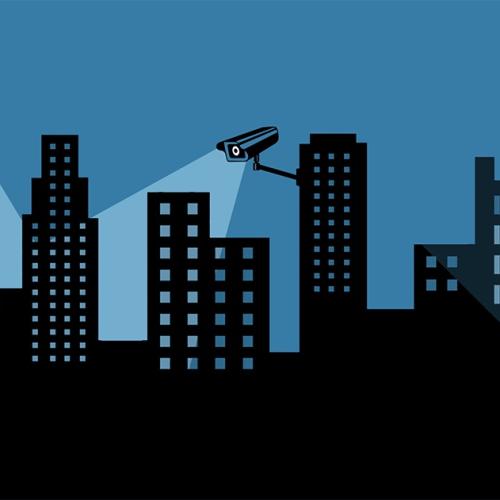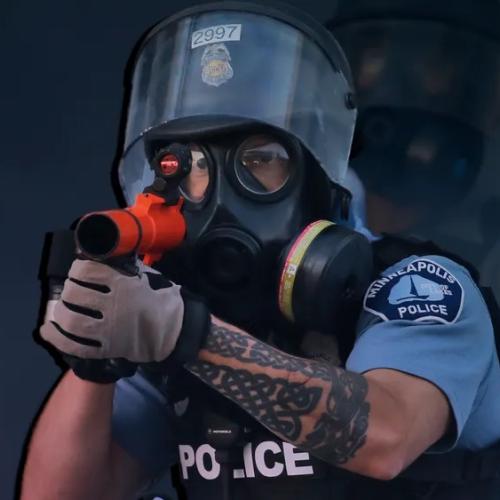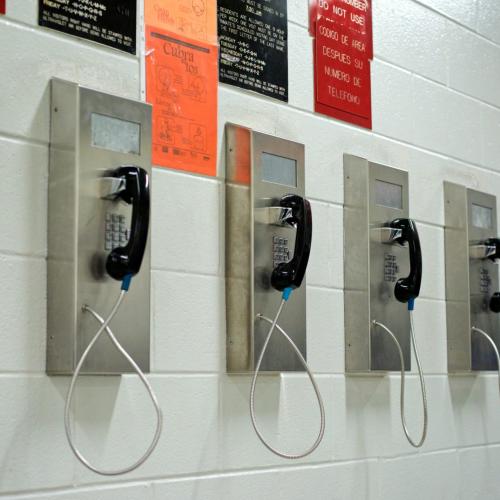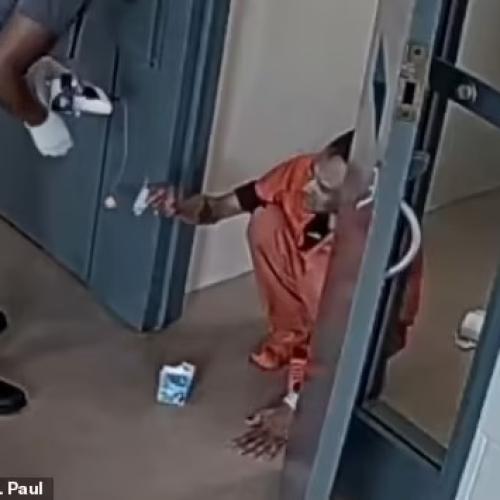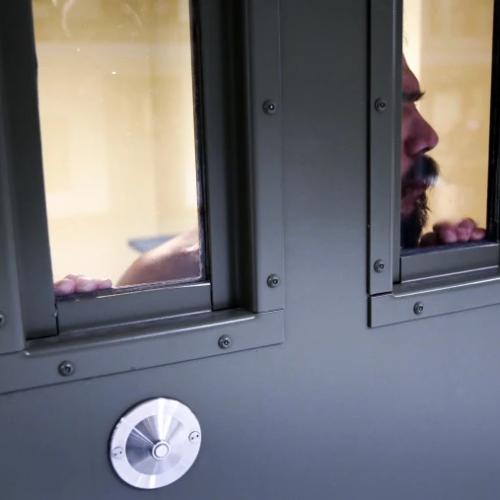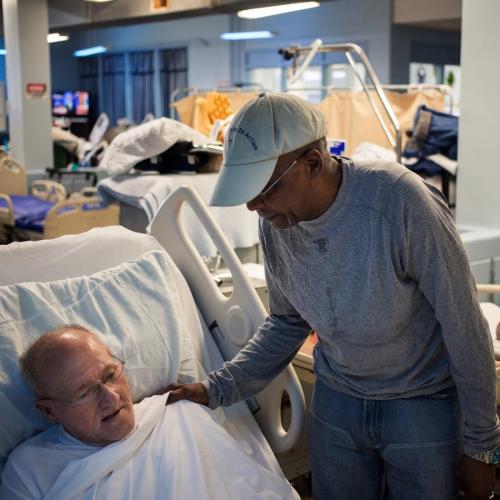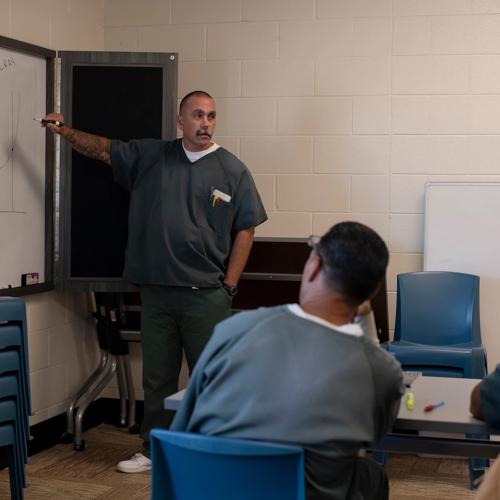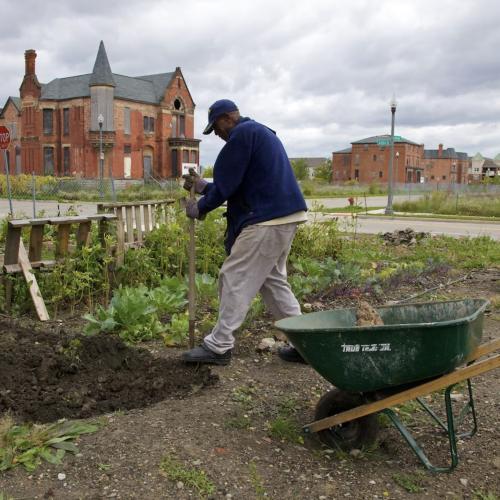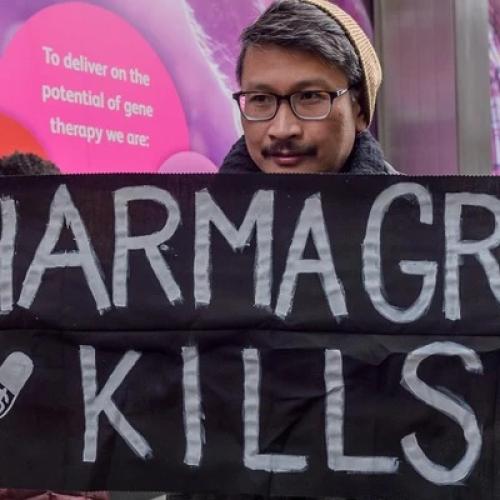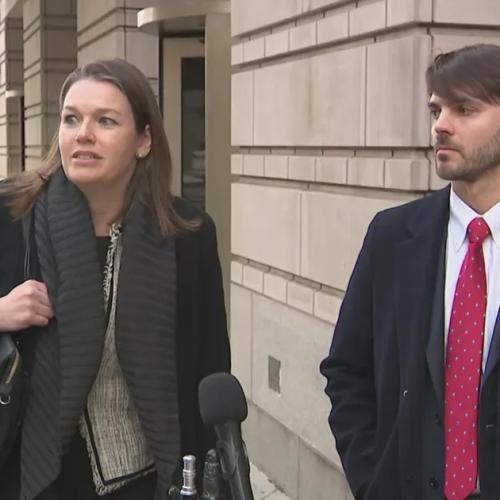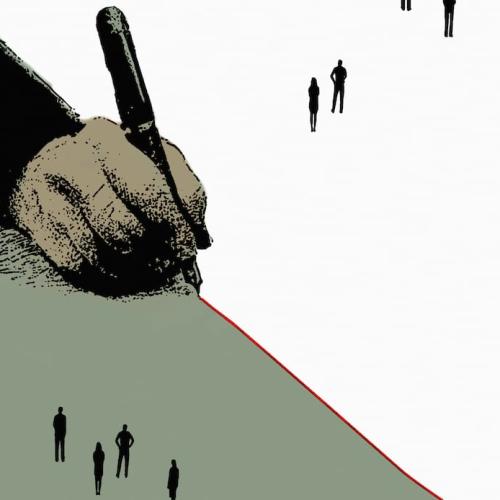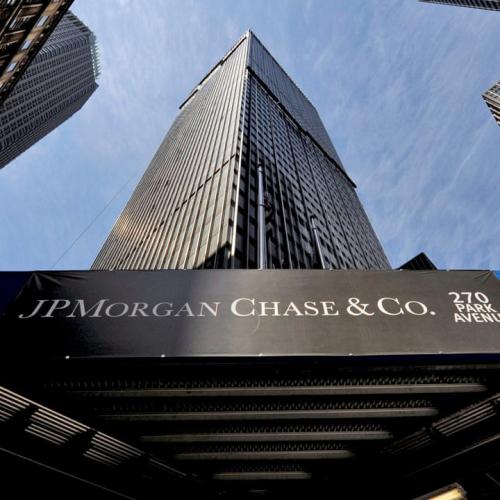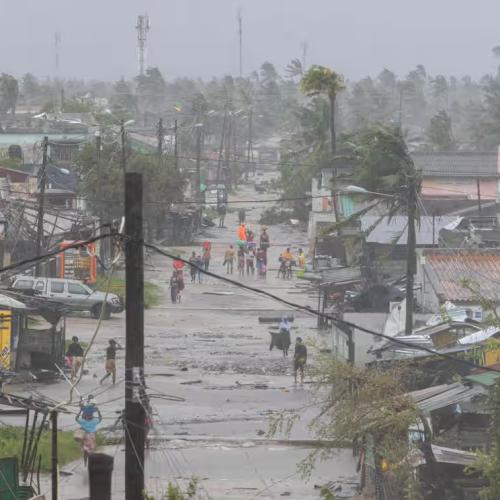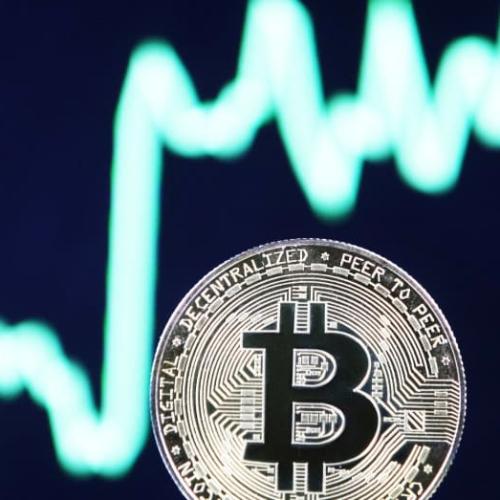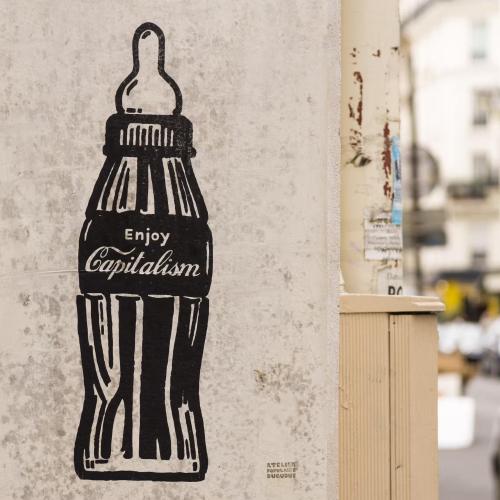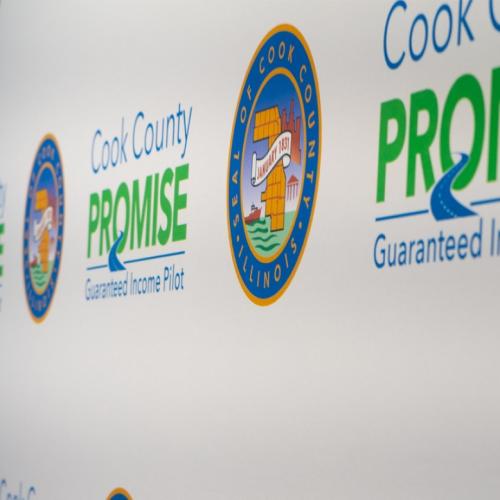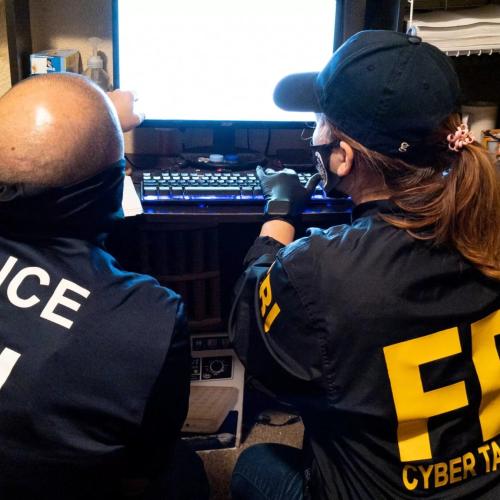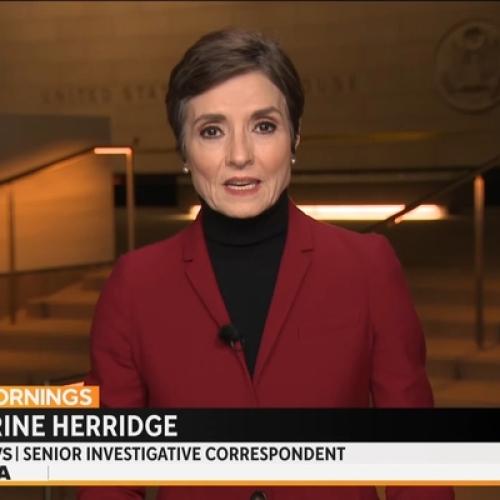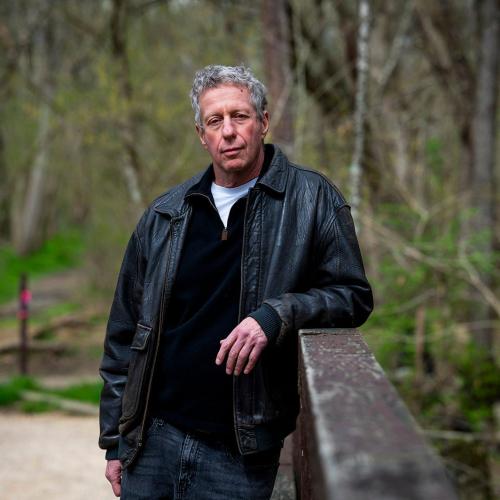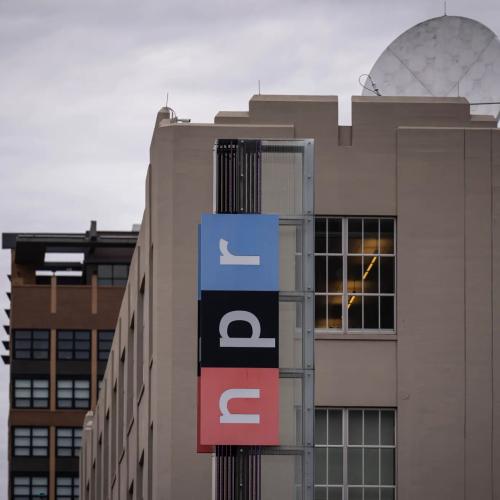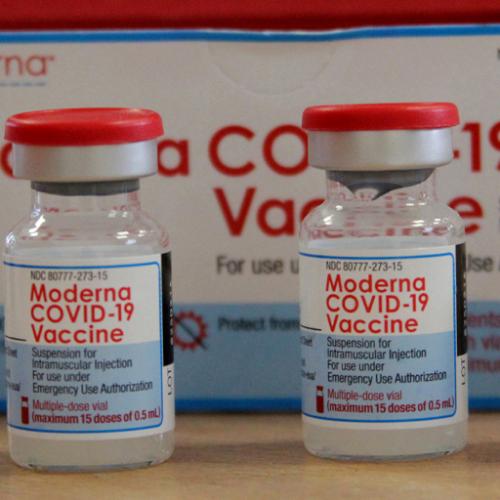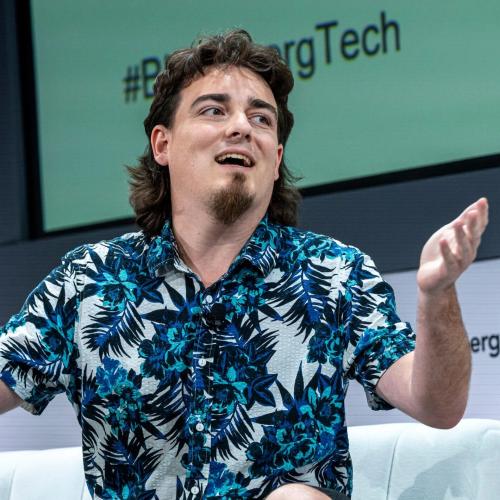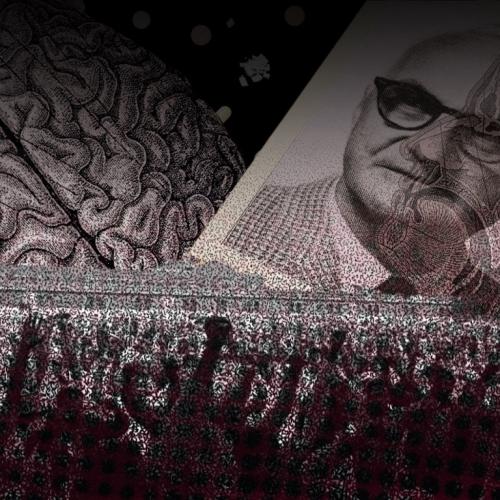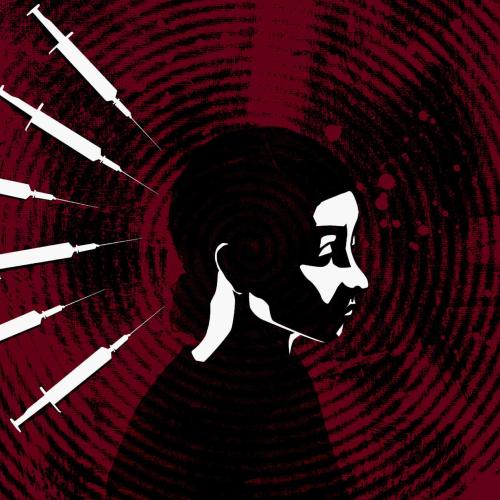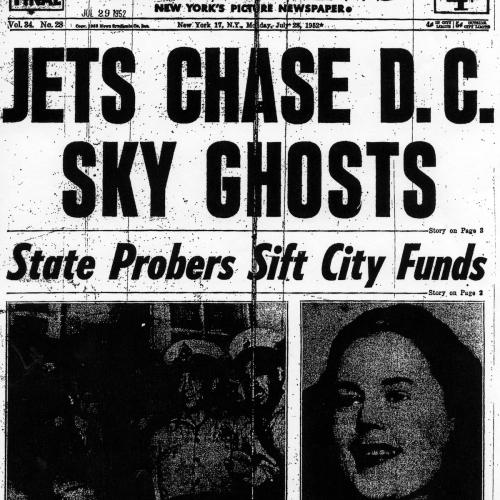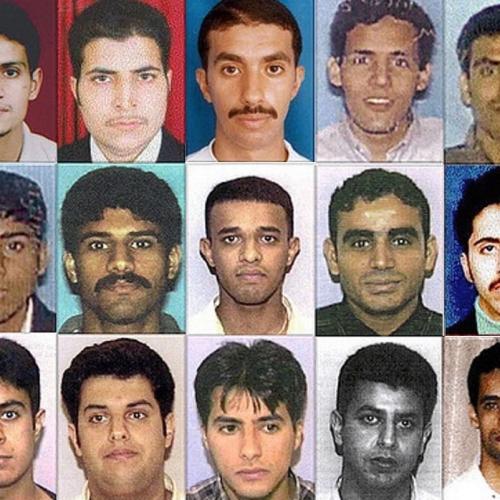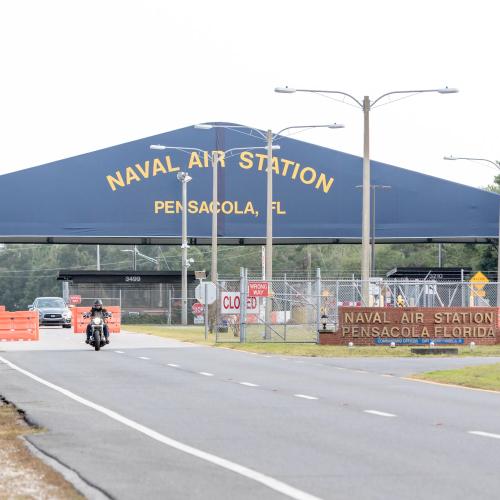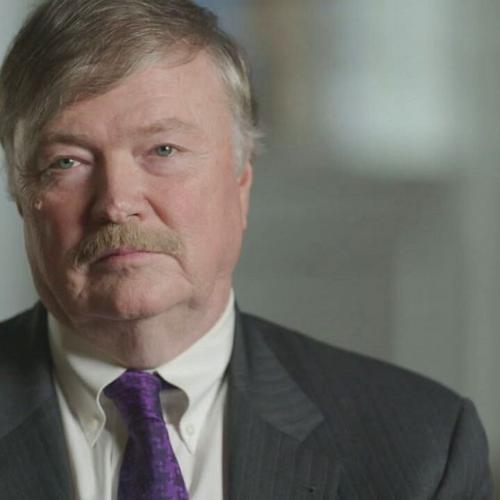Search 13,001 Media Articles
Can the mind-blowing effects of psychedelics help heal our traumas? The scientific community [says] it's an increasingly hopeful thumbs up. Despite the fact that psychedelics are illegal, the last decade has seen an explosion of research, with results so intriguing that governments are greenlighting studies around the world. Scientists are busily exploring the role of hallucinogens on treatment-resistant depression, post traumatic stress disorder, cancer-related anxiety, addictions, and even anorexia. During the '40s and early '50s tens of thousands of patients took LSD and other psychotropics to study their effects on cancer anxiety, alcoholism, opioid use disorder, depression, and ... PTSD. Researchers began to see psychedelics as possible "new tools for shortening psychotherapy." In the 1950s UK psychiatrist Dr. Humphry Osmond began giving LSD to treatment-resistent alcoholics: 40% to 45% of those who took LSD were still sober after a year. [Then] in 1970, President Richard Nixon ... classified hallucinogenics as Schedule I drugs -- the most restrictive category. [Fast forward to today and] MAPS is in the final phase of a gold-standard study administering MDMA [Ecstasy] to 300 people with severe PTSD. Results of the second phase showed 68% of the people no longer met the criteria for PTSD at a 12-month follow-up; before the study they had suffered from treatment-resistant PTSD for an average of 17.8 years. The results are so positive that in January the FDA declared MDMA-assisted psychotherapy for PTSD a "Breakthrough Therapy." Perhaps one day soon a trip to the therapist will include a trip into your mind, and hopefully, a quicker path to healing.
Note: The full article at the link above gives a concise, yet thorough survey of the use of psychedelics for healing and growth over the years. For more along these lines, see concise summaries of deeply revealing news articles on the powerful healing potentials of some psychedelics from reliable major media sources.
Pharmaceutical giant Purdue Pharma LP secretly pursued a plan, dubbed "Project Tango," to become "an end-to-end pain provider" by selling both opioids and drugs to treat opioid addiction, all while owners on the board - members of one of America's richest families - reaped more than $4 billion in opioid profits, according to a lawsuit newly unredacted. The suit says the company and its owners, the Sackler family ... engaged in a decade of deception to push their pharmaceuticals, namely the painkiller OxyContin, on doctors and patients, publicly denying what internal documents show they privately knew to be true: that the highly addictive drugs were resulting in overdoses and deaths. Purdue examined selling overdose antidotes, including Narcan, as "complementary" products to the same doctors to whom it sold its opioids, the lawsuit claims, and although the company maintained a ledger of doctors it suspected of inappropriate opioid prescriptions and other forms of abuse, dubbed "Region Zero," it continued to collect revenue from those doctors. The Sacklers paid themselves more than $4 billion in opioid profits between April 2008 and 2018. In 2017, there were 47,600 opioid-linked drug fatalities in the United States. The unredacted complaint also says consulting firm McKinsey & Co. played a crucial role in advising the company on how to push its product on doctors and boost its profits.
Note: Many doctors also profited from excessive prescribing of dangerous opioids. And according to a former DEA agent, Congress helped drug companies fuel the opioid epidemic. For more along these lines, see concise summaries of deeply revealing Big Pharma corruption news articles from reliable major media sources.
It's estimated that more than 107,000 people in the United States died due to opioid overdoses in 2021. Washington Post journalist Scott Higham notes it's "the equivalent of a 737 Boeing crashing and burning and killing everybody on board every single day." In the new book, American Cartel, Higham and co-author Sari Horwitz make the case that the pharmaceutical industry operated like a drug cartel, with manufacturers at the top; wholesalers in the middle; and pharmacies at the level of "street dealers." The companies collaborated with each other — and with lawyers and lobbyists — to create legislation that protected their industry, even as they competed for market share. "It really is the companies that run the show," Higham says. "People were dying by the thousands while these companies were lobbying members of Congress ... to pass legislation and to lobby members of the Department of Justice and try to slow down the DEA enforcement efforts." Big pharma fought to create legislation that would limit the DEA's ability to go after drug wholesalers. The efforts were effective; more than 100 billion pills were manufactured, distributed and dispensed between 2006 and 2014. Meanwhile, both federal and state DEA agents are frustrated by the ways in which their enforcement efforts have been curtailed. Right now there are 40,000 Americans who are in jail on marijuana charges. And not one executive of a Fortune 500 company involved in the opioid trade has been charged with a crime.
Note: For more along these lines, see concise summaries of deeply revealing news articles on corruption in government and in the pharmaceutical industry from reliable major media sources.
As tens of thousands of Americans die from prescription opioid overdoses each year, an exclusive analysis by CNN and researchers at Harvard University found that opioid manufacturers are paying physicians huge sums of money - and the more opioids a doctor prescribes, the more money he or she makes. The CNN/Harvard analysis looked at 2014 and 2015, during which time more than 811,000 doctors wrote prescriptions to Medicare patients. Of those, nearly half wrote at least one prescription for opioids. Fifty-four percent of those doctors - more than 200,000 physicians - received a payment from pharmaceutical companies that make opioids. Among doctors in the top 25th percentile of opioid prescribers by volume, 72% received payments. Among those in the top fifth percentile, 84% received payments. Among the very biggest prescribers ... 95% received payments. On average, doctors whose opioid prescription volume ranked among the top 5% nationally received twice as much money from the opioid manufacturers, compared with doctors whose prescription volume was in the median. Pharmaceutical company payments to doctors are not unique to opioids. Drug companies pay doctors billions of dollars for various services. In 2015, 48% of physicians received some pharmaceutical payment. The CNN and Harvard findings are in line with other studies suggesting that money from drug companies does influence a doctor's prescribing habits.
Note: From 1999 to 2015, over 183,000 people died from prescription opioid overdoses in the US. A CBS article titled, "Ex-DEA agent: Opioid crisis fueled by drug industry and Congress" describes major regulatory failures that contributed to this crisis. For more along these lines, see concise summaries of deeply revealing Big Pharma corruption news articles from reliable major media sources.
To combat an escalating opioid epidemic, the Drug Enforcement Administration trained its sights in 2011 on Mallinckrodt Pharmaceuticals, one of the nations largest manufacturers of the highly addictive generic painkiller oxycodone. It was the first time the DEA had targeted a manufacturer of opioids for alleged violations of laws designed to prevent diversion of legal narcotics to the black market. Ultimately, the DEA and federal prosecutors would contend that the company ignored its responsibility to report suspicious orders as 500 million of its pills ended up in Florida between 2008 and 2012. Investigators alleged in internal documents that the companys lack of due diligence could have resulted in nearly 44,000 federal violations and exposed it to $2.3 billion in fines. But six years later ... the government has taken no legal action against Mallinckrodt. Instead, the company has reached a tentative settlement. Under the proposal, which remains confidential, Mallinckrodt would agree to pay a $35 million fine and admit no wrongdoing. Mallinckrodts response was that everyone knew what was going on in Florida but they had no duty to report it, according to an internal summary of the case prepared by federal prosecutors. The Post reported in October that the DEAs civil and administrative enforcement efforts against the mammoth wholesale distributors that deliver painkillers to pharmacies stalled in the face of a stepped-up lobbying campaign by the drug industry.
Note: The city of Everett, Washington is currently suing Purdue Pharma, maker of the opioid pain medication OxyContin, for the company's alleged role in the diversion of its pills to black market buyers. For other reliable information on pharmaceutical involvement in the huge increase in opioid deaths, see Dr. Mercola's excellent article. For more along these lines, see concise summaries of deeply revealing pharmaceutical corruption news articles from reliable major media sources.
A former top Drug Enforcement Administration (DEA) official has accused Congress of putting pharmaceutical company profits ahead of public health in the battle to combat the USs prescription opioid epidemic. Joseph Rannazzisi, head of the DEA office responsible for preventing prescription medicine abuse until last year, said drug companies and their lobbyists have a stranglehold on Congress to protect a $9bn a year trade in opioid painkillers claiming the lives of nearly 19,000 people a year. Rannazzisi ... said the drug industry engineered recent legislation limiting the DEAs powers to act against pharmacies endangering lives by dispensing disproportionately large numbers of opioids. He also accused lobbyists ... of whipping up opposition to new guidelines for doctors intended to reduce the prescribing of the painkillers. Charges that Congress is too beholden to pharmaceutical companies have been levelled for years. But ... the influence on opioid policies is particularly disturbing because so many lives are being lost. Industry groups have spent hundreds of millions of dollars in lobbying to stave off measures to reduce prescriptions and therefore sales of opioid painkillers. Among the most influential drug industry groups is the Pain Care Forum, co-founded by a top executive of Purdue Pharma the manufacturer of the opioid which unleashed the addiction epidemic, OxyContin. It spent $740m lobbying Congress and state legislatures over the past decade.
Note: See also a Washington Post article for more. For more, see concise summaries of deeply revealing news articles on government corruption and Big Pharma profiteering.
When the drugs came, they hit all at once. It was the 80s, and by the time one in 10 people had slipped into the depths of heroin use - bankers, university students, carpenters, socialites, miners - Portugal was in a state of panic. In 2001 ... Portugal became the first country to decriminalise the possession and consumption of all illicit substances. Rather than being arrested, those caught with a personal supply might be given a warning, a small fine, or told to appear before a local commission a doctor, a lawyer and a social worker about treatment, harm reduction, and the support services that were available to them. The opioid crisis soon stabilised, and the ensuing years saw dramatic drops in problematic drug use, HIV and hepatitis infection rates, overdose deaths, drug-related crime and incarceration rates. HIV infection plummeted from an all-time high in 2000 of 104.2 new cases per million to 4.2 cases per million in 2015. Portugals remarkable recovery ... could not have happened without an enormous cultural shift, and a change in how the country viewed drugs. Portugals policy rests on three pillars: one, that theres no such thing as a soft or hard drug, only healthy and unhealthy relationships with drugs; two, that an individuals unhealthy relationship with drugs often conceals frayed relationships with loved ones, with the world around them, and with themselves; and three, that the eradication of all drugs is an impossible goal. In spite of Portugals tangible results, other countries have been reluctant to follow.
Note: Portugal's successful policy has contributed to public health outcomes that starkly contrast US trends.
Pharmaceutical companies are under the spotlight with congressional hearings on the cost of drug prices and allegations of the industrys role in the opioid crisis. Dr. Raeford Brown, a pediatric anesthesia specialist ... and chair of the Food and Drug Administration (FDA) Committee on Analgesics and Anesthetics, has been openly critical of big pharma and the lack of proper oversight from the FDA. Despite many politicians, particularly declared presidential candidates, beginning to speak out against big pharma, Brown does not think that anything will come out of it because Congress is owned by pharma. The pharmaceutical industry pours millions of dollars into the legislative branch every single year, he [said]. In 2016, they put $100 million into the elections. Thats a ton of money. OpenSecrets, a website operated by the nonpartisan Center for Responsive Politics, tracks money in U.S. politics. It ranked the top 20 members of the House and the Senate that have received the most campaign contributions from the pharmaceutical and health products industry. Kevin McCarthy, now the House minority leader after midterms, received ... a total of $380,350 in campaign contributions, with a large sum coming from pharma companies. Congress is supposed to have oversight for the FDA, Brown said. If the FDA isnt going to hold pharma accountable, and Congress is getting paid to not hold pharma accountable, then it really doesnt matter who the president is because its really about Congress.
Note: Learn more on how big Pharma controls politicians in this very well researched video. For more along these lines, see concise summaries of deeply revealing news articles on government corruption and Big Pharma profiteering from reliable major media sources.
As Covid raged, so did the country’s other epidemic. Drug overdose deaths rose nearly 30 percent in 2020 to a record 93,000, according to preliminary statistics released Wednesday by the Centers for Disease Control and Prevention. It’s the largest single-year increase recorded. The deaths rose in every state but two, South Dakota and New Hampshire, with pronounced increases in the South and West. Several grim records were set: the most drug overdose deaths in a year; the most deaths from opioid overdoses; the most overdose deaths from stimulants like methamphetamine; the most deaths from the deadly class of synthetic opioids known as fentanyls. In recent years, annual drug overdose deaths had already eclipsed the peak yearly deaths from car crashes, gun violence or the AIDS epidemic. The death toll from Covid-19 surpassed 375,000 last year, the largest American mortality event in a century, but drug deaths were experienced disproportionately among the young. In total, the 93,000 deaths cost Americans about 3.5 million years of life, according to a New York Times analysis. By comparison, coronavirus deaths in 2020 were responsible for about 5.5 million years of life. The pandemic itself undoubtedly contributed to the surge in overdose deaths, with disruption to outreach and treatment facilities and increased social isolation. Overdose deaths reached a peak nationally in the spring of 2020, in the midst of the pandemic’s most severe period of shutdowns and economic contraction.
Note: This is one of the many, sad but predictable consequences of the lockdown. Note also that the NY Times blames it on the pandemic never once mentioning it was the consequences of the lockdown much more than the pandemic itself that caused these many deaths. For more along these lines, see concise summaries of deeply revealing news articles on the coronavirus and health from reliable major media sources.
Painkiller abuse and overdose are lower in states with medical marijuana laws. When medical marijuana is available, pain patients are increasingly choosing pot over powerful and deadly prescription narcotics. Now a new study [provides] clear evidence of a missing link in the causal chain running from medical marijuana to falling overdoses. Researchers at the University of Georgia scoured the database of all prescription drugs paid for under Medicare Part D from 2010 to 2013. In the 17 states with a medical-marijuana law in place by 2013, prescriptions for painkillers and other classes of drugs fell sharply compared with states that did not have a medical-marijuana law. They found that, in medical-marijuana states, the average doctor prescribed 265 fewer doses of antidepressants each year, 486 fewer doses of seizure medication, 541 fewer anti-nausea doses and 562 fewer doses of anti-anxiety medication. But most strikingly, the typical physician in a medical-marijuana state prescribed 1,826 fewer doses of painkillers in a given year. Estimating the cost savings to Medicare from the decreased prescribing, [the study] found that about $165 million was saved in the 17 medical marijuana states in 2013. The estimated annual Medicare prescription savings would be nearly half a billion dollars if all 50 states were to implement similar programs.
Note: The war on drugs has been called a "trillion dollar failure", and an increasing number of deaths are caused by prescription opioid overdose in the US each year. For more along these lines, see concise summaries of deeply revealing health news articles from reliable major media sources. Then explore the excellent, reliable resources provided in our Health Information Center.
Investment bankers have pressed health care companies on the front lines of fighting the novel coronavirus, including drug firms developing experimental treatments and medical supply firms, to consider ways that they can profit from the crisis. The largest voices in the health care industry stand to gain from billions of dollars in emergency spending on the pandemic, as do the bankers and investors who invest in health care companies. Over the past few weeks, investment bankers have been candid on investor calls and during health care conferences about the opportunity to raise drug prices. Executives joked about using the attention on Covid-19 to dodge public pressure on the opioid crisis. Health and Human Services Secretary Alex Azar previously served as president of the U.S. division of drug giant Eli Lilly and on the board of the Biotechnology Innovation Organization, a drug lobby group. During a congressional hearing ... Azar rejected the notion that any vaccine or treatment for Covid-19 should be set at an affordable price. “We can’t control that price because we need the private sector to invest,” said Azar. “The priority is to get vaccines and therapeutics. Price controls won’t get us there.” The initial $8.3 billion coronavirus spending bill passed in early March ... contained a provision that prevents the government from delaying the introduction of any new pharmaceutical to address the crisis over affordability concerns. The legislative text was shaped, according to reports, by industry lobbyists.
Note: For more along these lines, see concise summaries of deeply revealing news articles on the coronavirus pandemic and Big Pharma profiteering from reliable major media sources.
To casual observers of either military service or the practice of yoga, the path from Oorah to Om may not seem obvious. But the intersection of yogi and veteran is natural if unexpected. Many members of the military now often include yoga ... as an element of their workout routine, and veterans turn to the practice for therapeutic applications. The Department of Veterans Affairs has successfully used yoga to help treat opioid addiction and post-traumatic stress. A lot of vets have post-traumatic stress, said Thierry Chiapello, who served in the Marines and now teaches yoga at the National Defense University in Washington. By lengthening the exhalation of breath, this gets people out of those fight-or-flight instincts that drain you, he continued, putting them in a mode of rest and recovery that definitely is associated with less aggressive behaviors. Christian Allaire experiences the service-driven life of yoga through his work for the Veterans Yoga Project, which provides yoga to roughly 1,000 veterans and their families per week as well as trains prospective teachers. We will have four or five people in a conference room at a V.A., he said. There might be an Iraq war vet in his 20s, a Korean War vet in his 80s, some can barely move, some may be missing limbs and the teachers job is to create space. Maybe all they can do is raise their hands above their heads, but we are creating a ritual.
Note: Explore a treasure trove of concise summaries of incredibly inspiring news articles which will inspire you to make a difference.
As eight states plus the District of Columbia have moved to fully legalize recreational marijuana, debates on the merits of legalization have focused on the effects of marijuana use on individuals and society. The National Academies of Sciences, Medicine and Engineering have brought a great deal of clarity to the situation with an encyclopedic report summarizing pretty much everything researchers know (and don't know) about the health effects of marijuana use. For the 395-page report, a team of dozens of drug policy experts at some of the nation's most prestigious universities analyzed 24,000 scientific papers to arrive at more than 100 conclusions regarding the effects of marijuana use. The committee found strong evidence showing marijuana is effective at treating chronic pain in adults. Given the current public health crisis involving tens of thousands of deaths annually because of painkiller overdoses, this is a potentially significant finding. The report also turned up strong evidence that marijuana is effective at treating nausea and vomiting, [as well as] muscle spasticity. The literature shows limited evidence that marijuana use is linked to the use of other substances. The report does not address the implications of these findings for current legalization debates. The researchers do, however, state emphatically that the current designation of marijuana as a Schedule 1 controlled substance ... is one of the chief barriers to conducting more badly needed research.
Note: Big Pharma has been caught systematically bribing doctors to over-prescribe deadly painkillers, and an ex-DEA official has publicly accused Congress of helping drug makers avoid responsibility for their role in the US opioid epidemic. Meanwhile, more people are arrested in the US for marijuana use than for all violent crimes combined. For more along these lines, see concise summaries of deeply revealing news articles on government corruption and health.
FBI agents arrested former Insys Therapeutics CEO Michael Babich and five other former company executives on Thursday for allegedly bribing doctors to prescribe an extremely addictive opioid painkiller to patients who didnt need it. The Department of Justice (DOJ) alleges that the executives took part in a nationwide conspiracy to give healthcare providers kickbacks in exchange for the improper prescribing of Subsys - an opioid medication containing the highly addictive substance fentanyl, which is considered even more dangerous than painkillers like Vicodin. Subsys is meant to provide pain relief to cancer patients who are going through particularly excruciating pain episodes. Its reserved for these neediest of patients due to its potency and addictive qualities. But federal prosecutors allege that Babich and his co-conspirators doled out kickbacks to doctors who prescribed the drug even to non-cancer patients, and even set up a special reimbursement unit to sway insurance companies and pharmacy benefits managers to provide coverage for these non-authorized uses. The charges range from racketeering to conspiracy to mail and wire fraud. The FBIs actions come in the wake of a newly invigorated federal effort to tackle the prescription painkiller epidemic, which has claimed the lives of more than 165,000 Americans since 1999.
Note: These charges come on the heels of an ex-DEA official's public accusation that Congress has been helping drug makers avoid responsibility for their role in the US opioid epidemic. How many deaths and ruined lives are being caused by greedy executives and the politicians in their pockets? For more along these lines, see concise summaries of deeply revealing Big Pharma corruption news articles from reliable major media sources.
In 2010, Purdue Pharma replaced the original version of OxyContin, an extended-release oxycodone pill, with a reformulated product that was much harder to crush for snorting or injection. The reformulation of OxyContin was instead associated with an increase in deaths involving illicit opioids and, ultimately, an overall increase in fatal drug overdoses. Researchers ... found that death rates rose fastest in states where reformulation would have had the biggest impact. A new study by RAND Corporation senior economist David Powell extends those findings by showing that the reformulation of OxyContin also was associated with rising suicides among children and teenagers. The root cause of such perverse effects was the substitution that occurred after the old version of OxyContin was retired. Nonmedical users turned to black-market alternatives that were more dangerous because their potency was highly variable and unpredictable—a hazard that was compounded by the emergence of illicit fentanyl as a heroin booster and substitute. The fallout from the reformulation of OxyContin is one example of a broader tendency: Interventions aimed at reducing the harm caused by substance abuse frequently have the opposite effect. Based on interstate differences in nonmedical use of OxyContin prior to 2010, Powell estimates that "the reformulation of OxyContin can explain 49% of the rise in child suicides."
Note: More than 107,000 people in the United States died due to opioid overdoses in 2021. For more along these lines, see concise summaries of deeply revealing news articles on Big Pharma corruption from reliable major media sources.
Ryan Stevens sat on the edge of a concrete balustrade in Central Park after finishing three laps around the reservoir. She and her fellow runners [are] from Odyssey House, a drug and alcohol rehabilitation center. Ms. Stevens, who is 36 and lives in the Morris Park neighborhood of the Bronx, was prepping for Sundays New York City Marathon her fourth, she said as a member of a unique group of competitors: former drug users who turned to running as part of their recovery from opioid addiction. Ms. Stevens said she grew up in Rhode Island and became addicted to her mothers prescription opioids at 22. That opened the door to ecstasy, cocaine and crystal meth. She completed an inpatient residential program at Odyssey House in June. Running, she said, has been central to her recovery. The 45 runners on the Odyssey House team who are planning to run New Yorks 26.2-mile trek include 19 current clients. The rest are supporters and alumni. John Tavolacci, Odyssey Houses chief operating officer, said he has run 22 marathons. He started the running group in 2001 as a supplement to treatment, based on a strong belief that running can be effective in helping overcome addiction. He has watched the Odyssey House team build self-esteem among participants, create a cooperative environment, and fill time for runners that otherwise might have been spent on negative pursuits.
Note: Explore a treasure trove of concise summaries of incredibly inspiring news articles which will inspire you to make a difference.
Purdue Pharma, the maker of OxyContin, pleaded guilty Tuesday to three federal criminal charges related to the company's role in creating the nation's opioid crisis. Purdue Pharma board chairman Steve Miller pleaded guilty on behalf of the company during a virtual federal court hearing in front of US District Judge Madeline Cox Arleo. The counts include one of dual-object conspiracy to defraud the United States and to violate the Food, Drug, and Cosmetic Act, and two counts of conspiracy to violate the Federal Anti-Kickback Statute. The plea deal announced in October includes the largest penalties ever levied against a pharmaceutical manufacturer, including a criminal fine of $3.544 billion and an additional $2 billion in criminal forfeiture, according to a Department of Justice press release. According to the US Centers for Disease Control and Prevention, about 70,000 Americans died of drug overdoses in 2018, just one year of the opioid crisis, and about 70% of those deaths were caused by prescription or illicit opioids like OxyContin. Several civil lawsuits against Purdue Pharma related to the opioid crisis are still ongoing as the company undergoes bankruptcy proceedings. The Plaintiffs' Executive Committee in the National Prescription Opiate Litigation Multi-District Litigation called Purdue Pharma's guilty plea "long overdue." "Their illegal and profit-seeking actions were egregious. It is important to note, however, that they are just one company in one part of the larger opioid supply chain," [the plaintiffs'] attorneys ... said.
Note: The company pays huge fines for the deaths of countless thousands, yet the CEO and others responsible face no legal charges. Where is the deterrent for this egregious behavior? For more along these lines, see concise summaries of deeply revealing news articles on Big Pharma corruption from reliable major media sources.
One of the first things I learned about pain was its value. I was a third-year medical student in 1976. We were ... encouraged to listen carefully to the patients experience of pain, the timing, the duration and any factors that made it better or worse. Forty years later, our concept of pain couldnt be more different. Instead of learning from pain, we now regard it as an illness in and of itself. Insurance companies, health-care providers and drugmakers have all worked to increase the publics fear of pain, leading us to see it as something to be treated, eliminated, banished never lived with or accommodated or managed lest it destroy us. They turned our natural fear into big business; our fee-for-service system has multiplied treatments based primarily on the financial rewards for pharmaceutical companies, doctors and hospitals. That attitude shift is perhaps the most overlooked explanation for an opioid crisis that kills tens of thousands of Americans every year. A healthy fear of pain ... protects us from injury and reminds us to allow time for healing. But otherwise, the fear of pain, and the belief that a pain-free existence is optimal or even possible, has been a catastrophe for patients. Before the opioid revolution, doctors understood that pain was important to keeping us safe, to be lived with and managed. Even if this meant we bore frequent episodes of discomfort, that was better than the nationwide crisis America faces today. Life isnt pain free. If we want to end the epidemic of addiction, we need to relearn that lesson.
Note: For more along these lines, see concise summaries of deeply revealing news articles on health from reliable major media sources.
Purdue Pharma has agreed to pay $270 million to settle a historic lawsuit brought by the Oklahoma attorney general, who accused the OxyContin maker of aggressively marketing the opioid painkiller and fueling a drug epidemic that left thousands dead in the state. The settlement comes after Purdue [sought] to delay the start of the trial, which is scheduled for May 28. Attorney General Mike Hunter said ... that $102.5 million of the settlement would be used to help establish a national addiction treatment and research center at Oklahoma State University. The company will also provide $20 million of addiction treatment and opioid rescue medications to the center. A remaining $12.5 million from the settlement will be used directly to help cities and counties with the opioid crisis. The Sackler family, who founded and own Purdue Pharma, will also contribute $75 million over the next five years to the treatment and research center. The lawsuit was brought by Hunter against some of the nation's leading makers of opioid pain medications, alleging that deceptive marketing over the past decade fueled the epidemic in the state. Hunter has said the defendants - Purdue Pharma, Johnson & Johnson, Teva Pharmaceuticals, Allergan and others - deceived the public into believing that opioids were safe for extended use. The settlement was only with Purdue Pharma, and the other defendants are still scheduled to go to trial. Thirty-six states have brought cases against Purdue and other opioid drugmakers.
Note: Many doctors also profited from excessive prescribing of dangerous opioids. And according to a former DEA agent, Congress helped drug companies fuel the opioid epidemic. For more along these lines, see concise summaries of deeply revealing Big Pharma corruption news articles from reliable major media sources.
Louis Milione retired from the DEA a second time this summer amid reporting by The Associated Press on potential conflicts caused by his prior consulting for the pharmaceutical industry. Less than three months later, Milione again landed a plum job at Guidepost Solutions, a New York-based firm hired by some of the same companies he had been tasked with regulating when he returned to the DEA in 2021. Milione had spent four years at Guidepost prior to his return, leveraging his extensive experience and contacts from a 21-year DEA career. Milione is the most senior of a slew of DEA officials to have traded their badge and gun for a globe-trotting consulting job. His career stands out for two cycles through the revolving door between government and industry, raising questions about the potential impact on the DEA’s mission to police drug companies blamed for tens of thousands of American overdose deaths. Milione’s private-sector clientele also included Morris & Dickson Co., the nation’s fourth-largest wholesale drug distributor, as it tried to stave off DEA sanctions for disregarding thousands of suspicious, high-volume orders. The DEA allowed the company to continue shipping drugs for nearly four years after a judge recommended its license be revoked for “cavalier disregard” of rules aimed at preventing opioid abuse. It was not until AP began asking questions this spring that the DEA moved to finally strip the Shreveport, Louisiana-based company of its license to distribute highly addictive painkillers.
Note: For more along these lines, see concise summaries of deeply revealing news articles on corruption in government and in the pharmaceutical industry from reliable major media sources.









